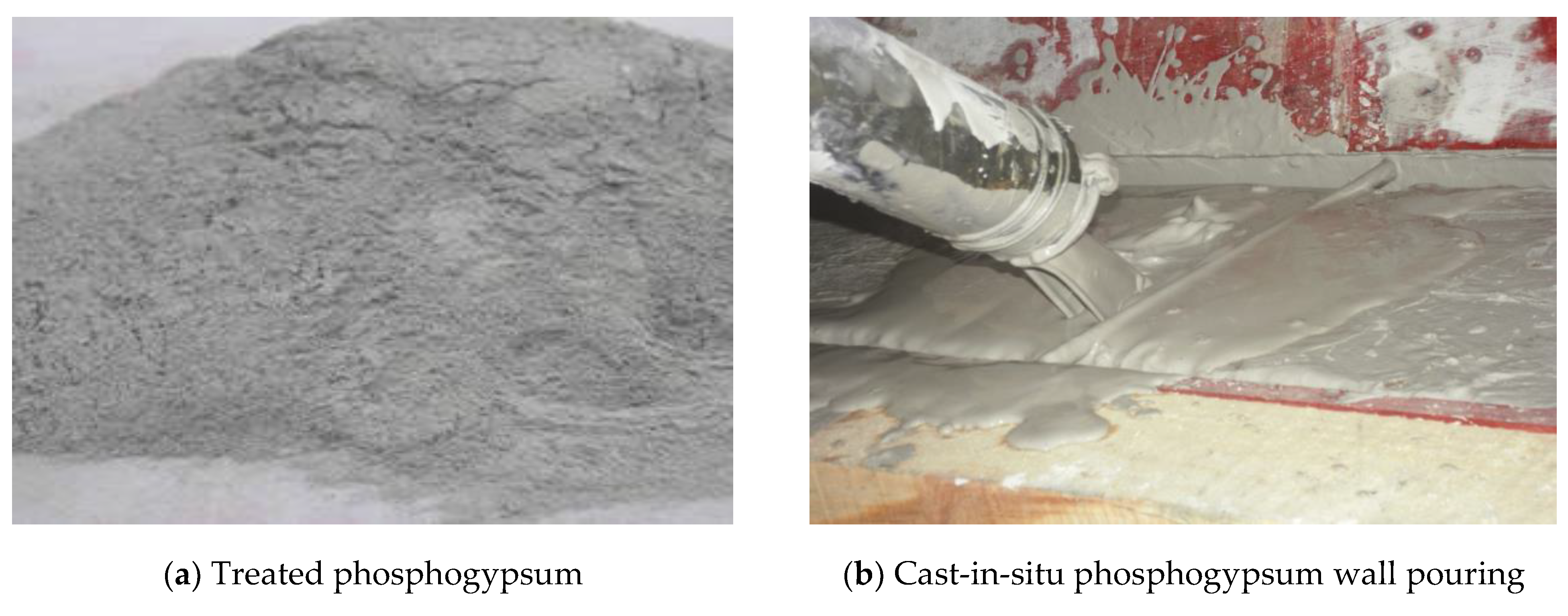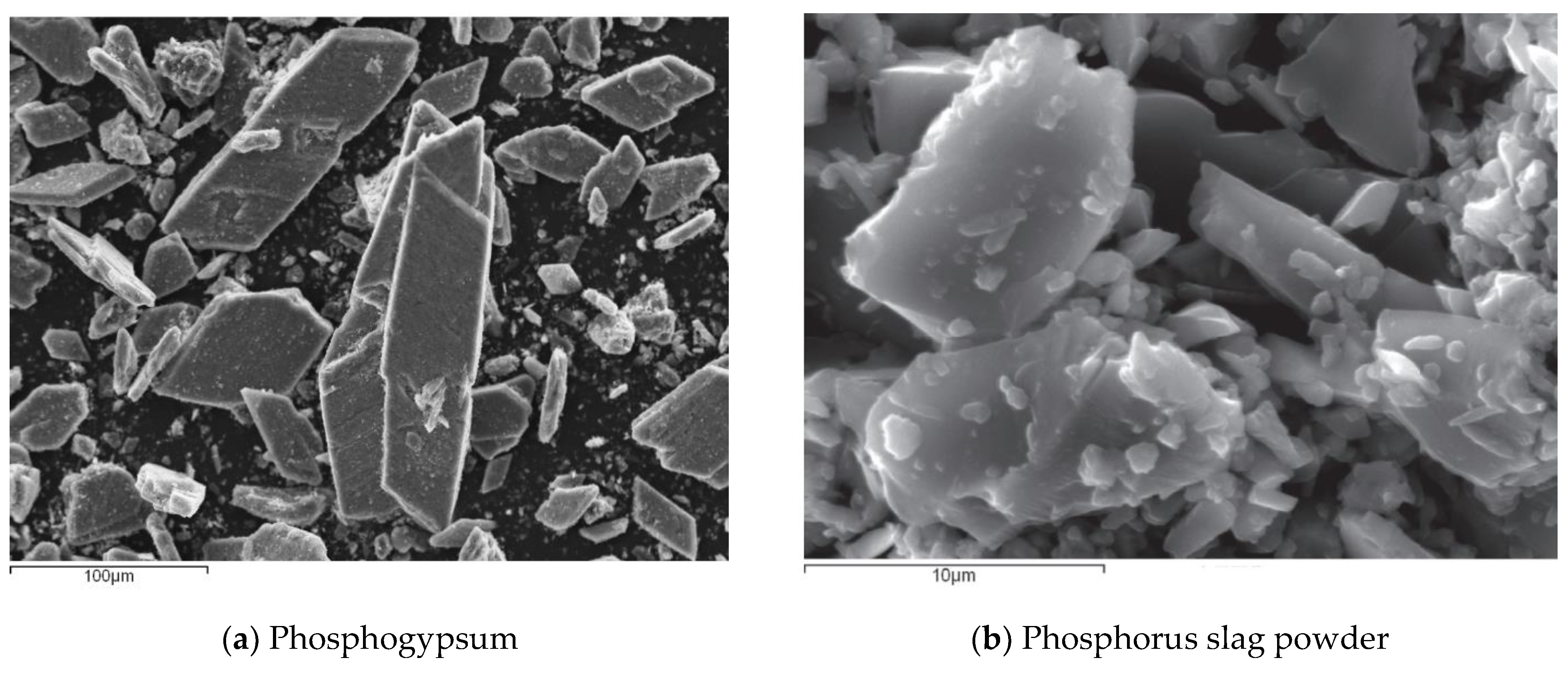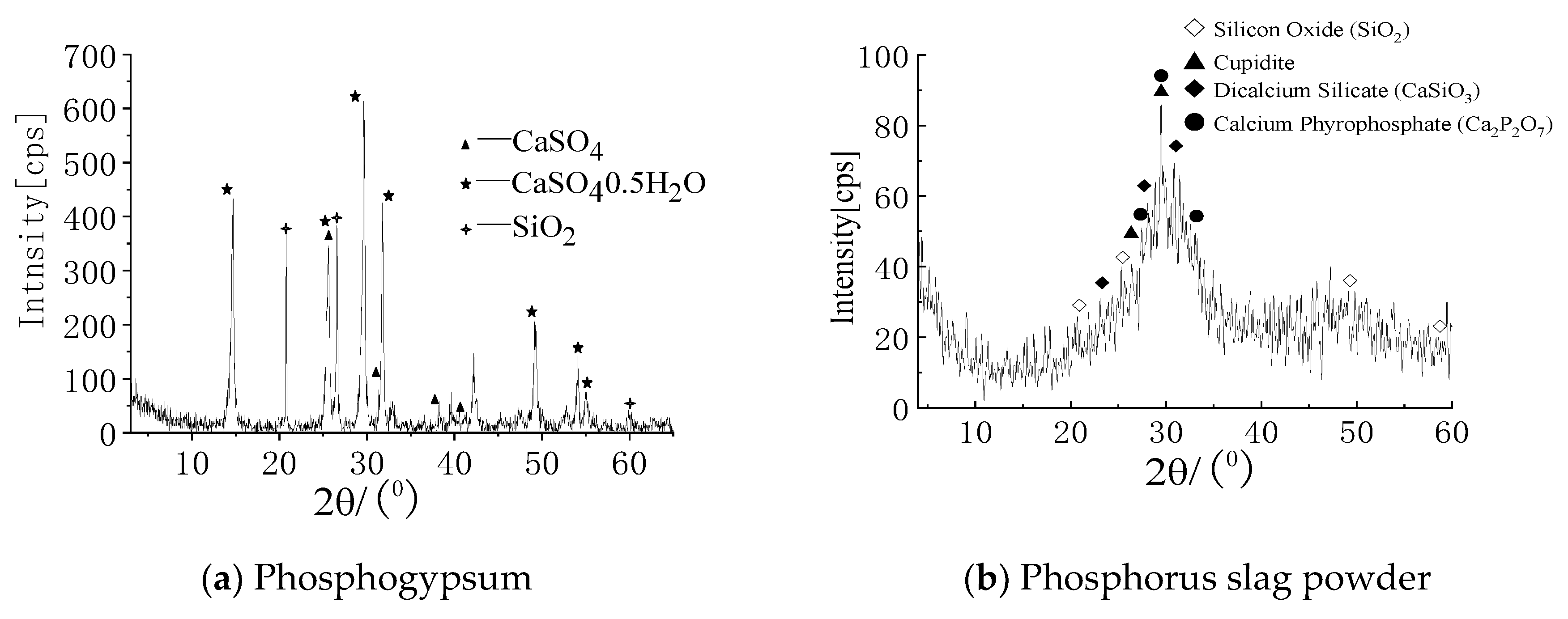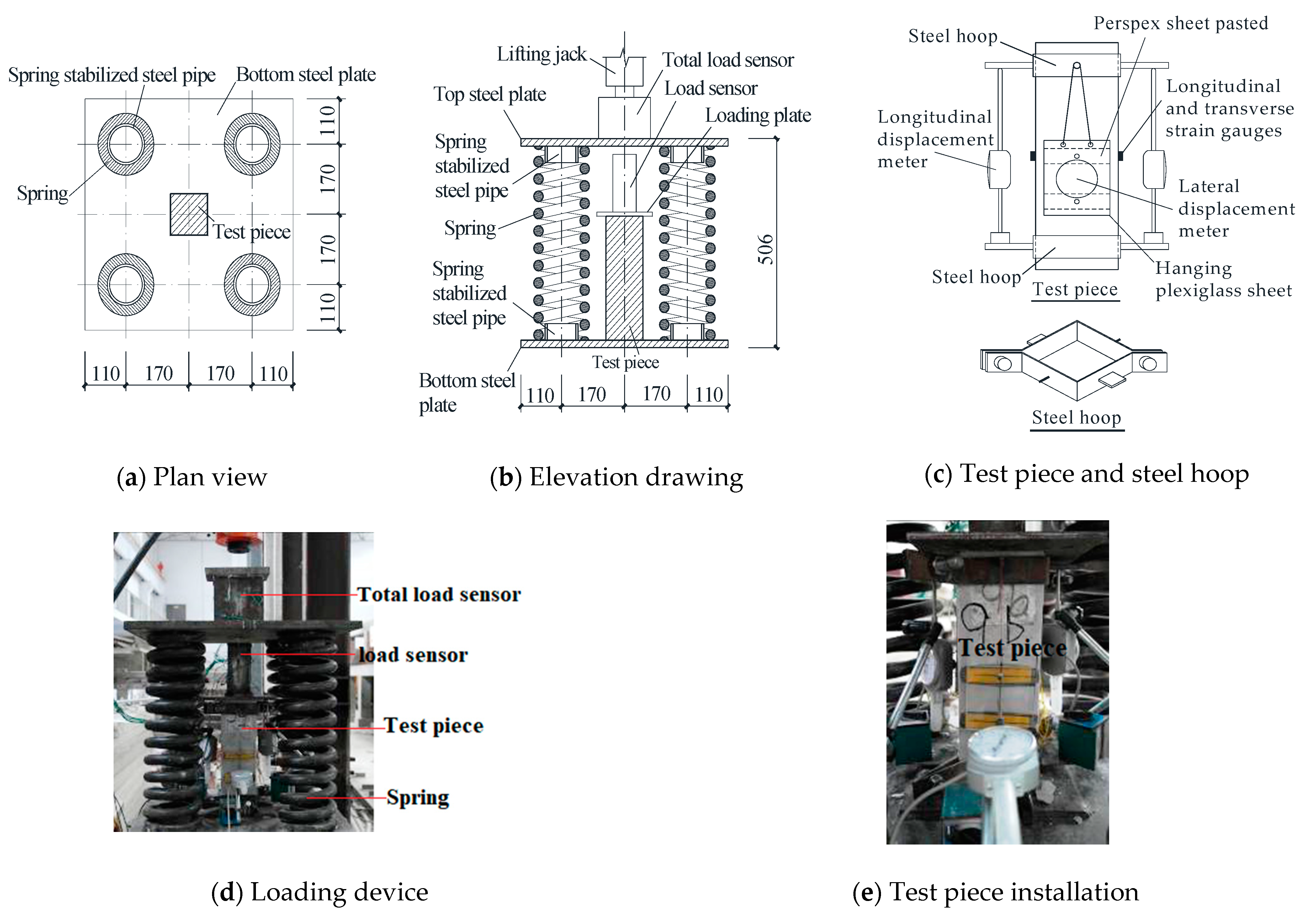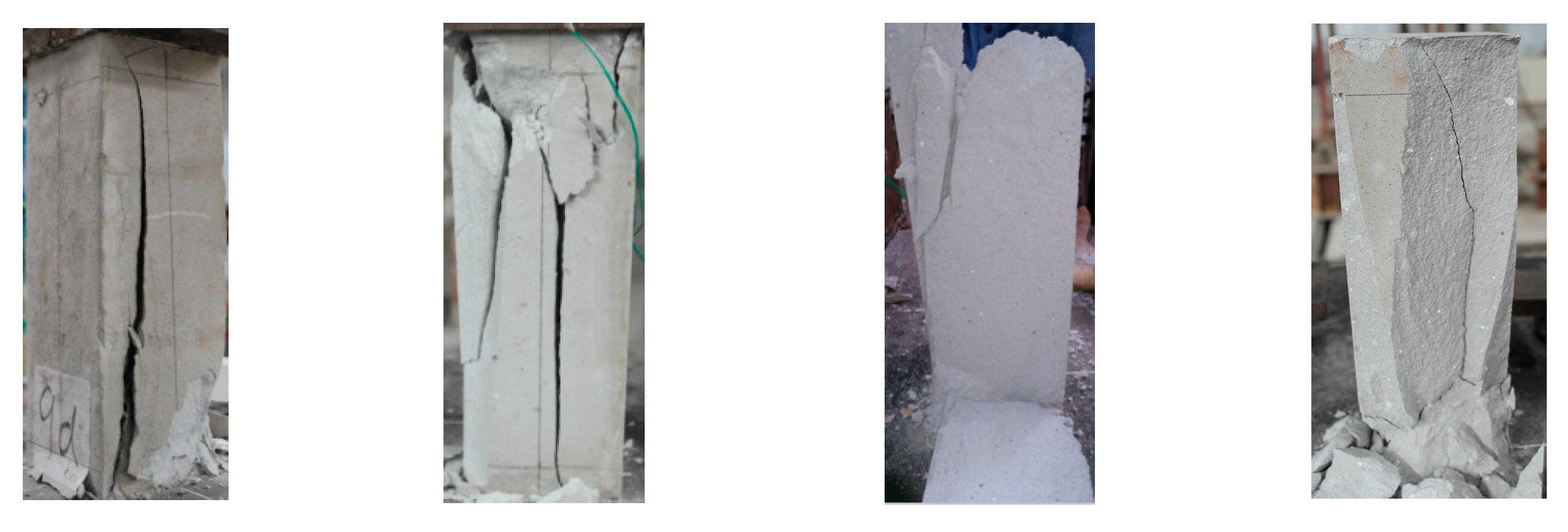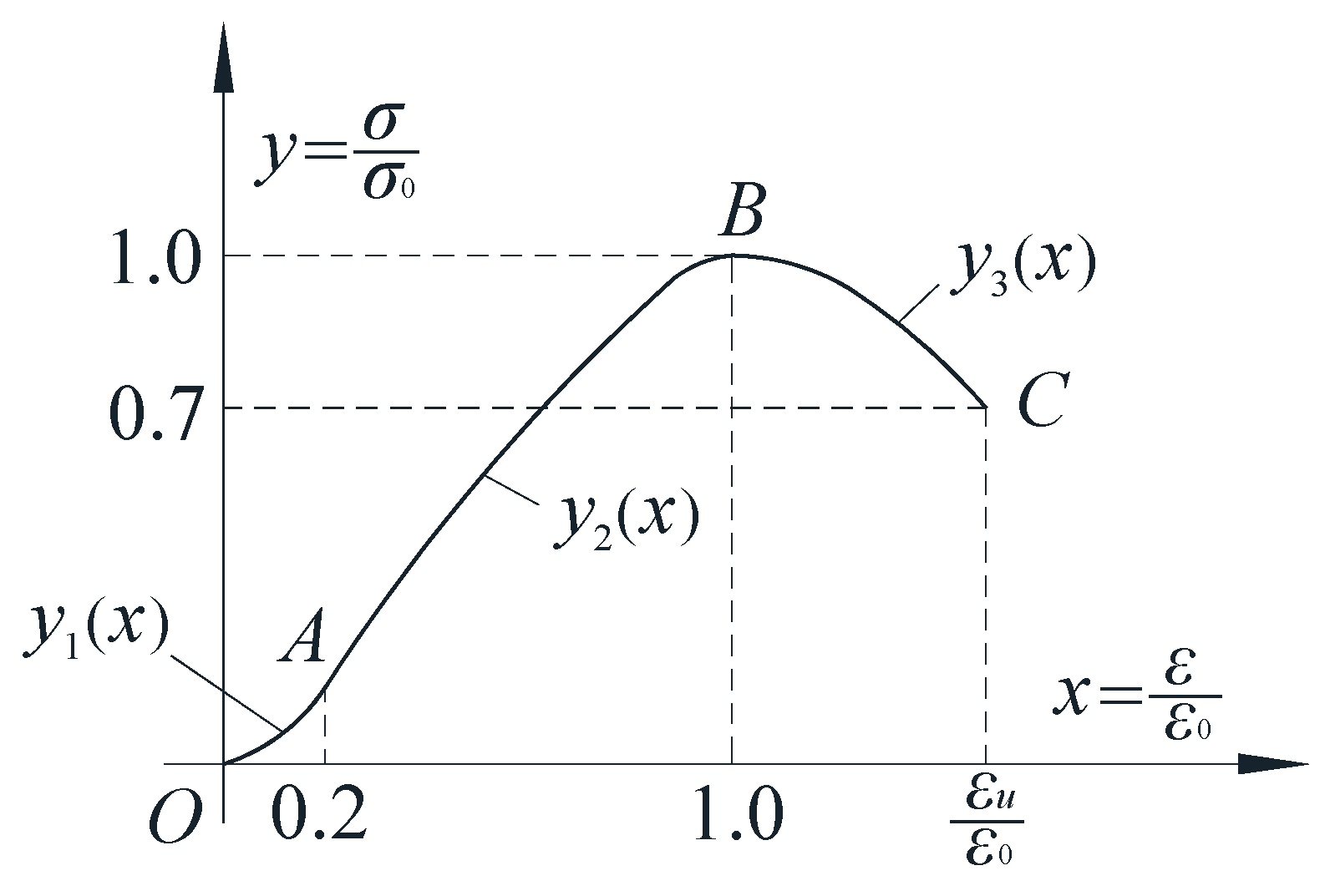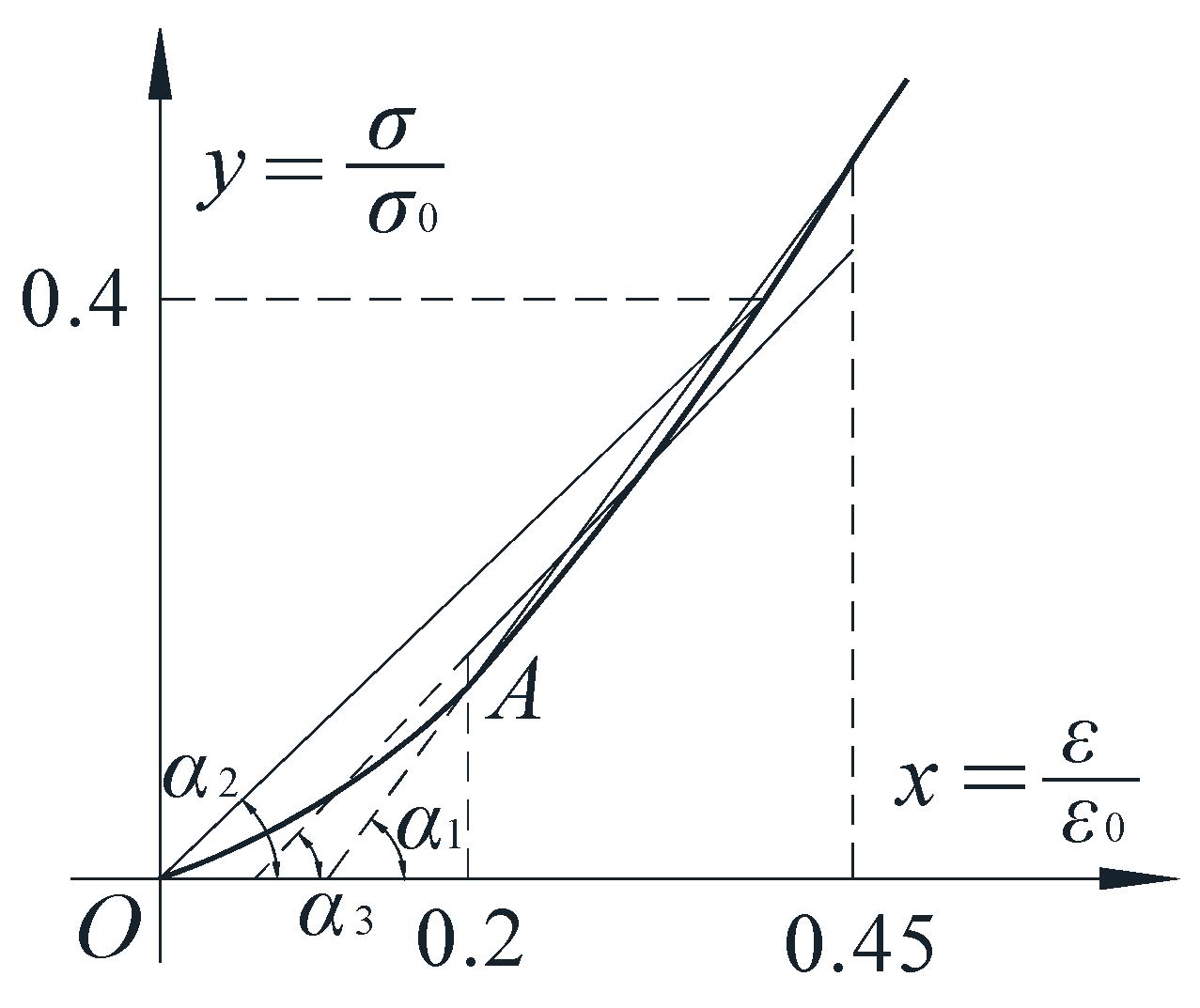1. Introduction
With the rapid development of the economy, developments in architecture are also occurring with each passing day. On the one hand, a large number of new structural forms have emerged from the innovation of building structures [
1]; on the other hand, breakthroughs have been made in building materials, especially in the research of composite materials, reinforced polymers and other aspects, and certain achievements have been made [
2,
3]. The technology of 3D printing has also been applied [
4], and the utilization of phosphogypsum resources has been involved in the whole process [
5]. China’s phosphate ore resources are mainly distributed in Hubei, Yunnan, Guizhou, Sichuan, Hunan and five other provinces, and it is one of the largest phosphate producing countries in the world [
6]. Phosphorous chemical products are widely used in agriculture, the chemical industry, medicine and other fields [
7], play an important role in the development of the national economy, and also produce a large amount of phosphogypsum. The vast majority of this phosphogypsum is stacked as waste. The investment needed for storage yards is large, the operation costs are high and they occupy a lot of land resources. The environmental pollution caused by the infiltration of harmful substances, such as soluble P
2O
5 and fluoride, in phosphogypsum into the soil and water systems is also increasingly prominent [
8,
9]. However, the comprehensive utilization rate of phosphogypsum is low in China; it is mainly used to produce building materials with low added value. In this regard, the research and development of new technologies and new products of phosphogypsum should be accelerated. If industrial waste gypsum can be modified and comprehensively utilized, it can be turned into treasure. At present, the comprehensive utilization of phosphogypsum is mainly reflected in the following aspects.
First, in the development of new chemical products after reprocessing. For example, in the literature [
10], CaO-Al2O3-SiO2 glass-ceramic was prepared from phosphogypsum and studied by differential thermal analysis (DTA) and X-ray diffraction (XRD). The work [
11] describes a method of successfully preparing high-quality nano-calcium fluoride in aqueous solutions by direct precipitation using calcined phosphogypsum as a raw material. The work [
12] introduces a continuous and large-scale method for manufacturing phosphogypsum composites through a reactive extrusion strategy. The work [
13] proposed a simple and efficient approach for the high-purity CaSO
4·2H
2O (DH) whiskers and α-CaSO
4·0.5H
2O (α-HH) whiskers derived from phosphogypsum (PG). The work [
14] studied the effect of different conditions on the preparation of CaS by reducing PG with coal in a fluidized bed. This method not only requires a large initial investment, but also forms new pollutants and faces environmental pollution problems.
Second, in its use as a soil conditioner, where a large number of scholars have carried out relevant research. The literature [
15] describes how to industrially process phosphogypsum into organic mineral fertilizer. The literature [
16] studied the application of lime and phosphogypsum in weathered soil and determined the long-term (10 year) impact of lime and phosphogypsum on the soil surface of tropical NT soil C and N components; however, the application rate was low.
The third is in the processing of building and decoration materials with phosphogypsum, such as cement retarder and block, gypsum board and wire. The influence of phosphogypsum on cement setting and its applications are described in the literature [
17,
18,
19] over many years, which shows that the preparation of cement retarders is one of the main ways for the resource utilization of phosphogypsum. The works [
20,
21,
22] introduced the early-stage development of several phosphogypsum blocks and the current applications of unburned phosphogypsum permeable bricks. The works [
23,
24,
25,
26] introduced new technologies related to the preparation of phosphogypsum rapid wallboard and cast-in-situ phosphogypsum walls. Their application could consume a lot of pollutants and improve construction efficiency. The work [
27] compared and analyzed the chemical composition and pretreatment methods of different phosphogypsum, and summarized the use of phosphogypsum in cement retarders, building materials, cement raw materials, concrete raw materials, cementitious materials, fillers and modifiers. However, the consumption of phosphogypsum in these materials is small, which does not meet expectations, and the construction speed of block masonry is also slow.
Fourth, is its use in subgrade engineering and mine backfilling [
28,
29]. Measures should be taken to solidify phosphogypsum and isolate it from soil to prevent leakage pollution. However, the demand for gypsum in the above fields is limited, and China is rich in natural gypsum reserves, which makes it difficult to achieve the purpose of processing industrial waste. Only by modifying industrial waste phosphogypsum, transforming it into main building materials and expanding its application space, can we expect to achieve the purpose of large-scale treatment of industrial waste.
The literature [
7] summarizes the research progress of phosphogypsum in the fields of construction, rare earth extraction, agriculture, chemical industry and biomedical industry; outlines the current problems in the comprehensive utilization research and industrial application of phosphogypsum; and looks forward to the developing trend of basic theory and technology research of high value processing of phosphogypsum in the future. In order to maximize the use of phosphogypsum, turn waste into treasure and save resources, this work uses cast-in-situ phosphogypsum as the building material for structure walls, which can greatly reduce the environmental pollution by phosphogypsum. The strength of phosphogypsum material is an important mechanical parameter in its engineering application and mechanical properties are the main basis for studying phosphogypsum as a building material for structural walls. Therefore, this paper discusses the engineering mix ratio of the cast-in-situ phosphogypsum material, synthesizes test pieces to measure the engineering application technical performance indicators, such as the setting time, moisture content and radioactivity of the cast-in-situ phosphogypsum, and opens the research on the mechanical properties of the cast-in-situ phosphogypsum material. Through compressive tests on phosphogypsum cube and prism specimens, the compressive strength of cast-in-situ phosphogypsum is measured, the partial coefficient of the materials is given, the constitutive relationship of materials is drawn up and the mechanical performance indexes, such as the elastic modulus and Poisson’s ratio, of materials are measured for reference in engineering applications.
3. Results
3.1. Test Phenomenon
A total of 18 cube specimens and 38 prism specimens were synthesized according to the mix proportion in
Table 3, and an axial compression test was carried out for each. The theoretical side length of the cube specimens was 100 mm, and the theoretical dimensions of the prism specimens was 100 mm × 100 mm × 300 mm. The loading process can be roughly divided into three stages. When the load is 0.13~0.2 times the peak load, the cast-in-situ phosphogypsum between the upper loading plate and the steel hoop will fall off on the surface, indicating that the specimen is in the compaction stage. When the load reached 0.8~0.9 times the peak load, cracks appear on the surface of the specimen. With continued loading, the cracks extended to the upper and lower ends of the test piece and quickly penetrated the test piece, destroying it. The destruction process was relatively sudden and short, indicating that the cast-in-situ phosphogypsum has a high brittleness.
The typical failure state of the cube specimen is shown in
Figure 5. The failure state can be generally divided into cone failure and split failure. The split failure surface is mainly in the vertical and 45-degree planes, as shown in
Figure 5a. The conical failure state is shown in
Figure 5b, and there is no necessary relationship between the failure state and the material mix proportion. The failure state of prismatic specimen is mainly splitting failure, as shown in
Figure 6.
3.2. Volumetric Weight of Cast-In-Situ Phosphogypsum
The volumetric weight of the cast-in-situ phosphogypsum is mainly affected by the phosphogypsum and phosphorus slag powder. Through a statistical analysis of the test results of the volumetric weight of the test pieces, it is recommended that the volumetric weight of the cast-in-situ phosphogypsum be 14.0 kN/m3–15.0 kN/m3 when using the material mix ratio of this project.
3.3. Compressive Strength and Material Partial Factor
According to axial compressive strength tests of the cube and prism specimens, the compressive strength and its statistical parameters of phosphogypsum are shown in
Table 7.
In order to analyze the reliability of the bearing capacity of cast-in-situ phosphogypsum walls, an axial compression test of a 1/2 scale wall model was carried out. The section size of the specimen was a × b = 200 mm × 120 mm, 450 mm, 750 mm and 1050 mm in height. See
Figure 7 for the test results.
Based on the bearing capacity test results of the wall model and the actual engineering application needs and after the reliability analysis of the bearing capacity of the cast-in-situ phosphogypsum wall, it is recommended that the material sub coefficient of the cast-in-situ phosphogypsum be taken as γ
P = 1.9. The standard value and design value of compressive strength of each mix proportion material are shown in
Table 8.
3.4. Analysis of Strength Obtaining Mechanism of Cast-in-situ Phosphogypsum
The strength of the cast-in-situ phosphogypsum paste was obtained during the material hardening process. After the setting crystals interlace, the friction and cohesion between crystals strengthen the material paste. When setting and hardening stop, the strength will not increase. Phosphorus slag micropowder is a kind of potentially active hydraulic cementing material. Adding phosphorus slag micropowder can delay the hydration time of hemihydrate gypsum in the slurry, increase the fluidity of the cast-in-situ slurry and fill in the gap between dihydrate gypsum crystals to improve the water resistance of cast-in-situ phosphogypsum. The purpose of adding a retarder is to reduce the solubility and dissolution rate of hemihydrate calcium sulfate in phosphogypsum, delay the reduction time of hemihydrate calcium sulfate and thus prolong the setting time of the cast-in-situ phosphogypsum paste. The function of cement is to consume anhydrite in phosphogypsum.
The results show that the retarder has a great influence on the compressive strength of the cast-in-situ phosphogypsum, and it is suggested that the dose of retarder should be controlled between 0.2% and 0.4%. When the content of anhydrous calcium sulfate in phosphogypsum is high, the mix proportion of cement can be increased accordingly. When the mix proportion of retarder is about 0.3%, the quality mix proportion of cement can be controlled between 2.0% and 5.0%.
3.5. Material Constitutive Relationship of Cast-in-situ Phosphogypsum
In view of the high brittleness of the cast-in-situ phosphogypsum, according to the axial compression test results of the prism specimen with a side length of 100 mm × 100 mm × 300 mm, a three-stage stress–strain relationship curve of the cast-in-situ phosphogypsum material is proposed using dimensionless coordinates
x =
ε/
ε0 and
y =
σ/
σ0, as shown in
Figure 8.
In
Figure 8,
σ and
ε are the stress and strain of the cast-in-situ phosphogypsum, respectively,
σ0 is the peak stress,
ε0 is the peak strain corresponding to
σ0,
σr is the residual stress,
εu is the limit strain corresponding to
σr. The statistical control parameters of the constitutive curve are shown in
Table 9.
The curve equation can be divided into:
- ①
When the dosage of retarder is about 0.3%,
- ②
When the dosage of retarder is far greater than 0.3%,
Since the inflection point coordinates of the curves in Formulas (1) and (2) are relatively close, the recommended constitutive relationship of cast-in-situ phosphogypsum in this project is:
At this time, εu/ε0 = 1.45 and σr/σ0 = 0.7.
3.6. Elastic Modulus and Poisson’s Ratio
Due to the high brittleness of the cast-in-situ phosphogypsum, there is almost no linear phase in the constitutive relationship, so the elastic modulus of materials in this project was comprehensively evaluated according to the following three conditions:
The average value, Et1, of the secant elastic modulus was calculated based on the stress–strain test results when the strain values are 0.2ε0 and 0.45ε0;
The measured results of stress–strain at σ = 0.4σ0 were used to calculate the average value Et2 of secant elastic modulus across the origin;
According to the test results, under the condition of no lateral pressure, when , the cast-in-situ phosphogypsum is under load at the compaction stage, and the material constitutive relationship curve has an inflection point between and . Therefore, the inflection point was moved to x = 0.45, linear regression was conducted on the measured stress–strain results between and and the average slope of the regression line was approximated as the material elastic modulus, Et3.
The relationship between the three elastic moduli is shown in
Figure 9, where
α1,
α2 and
α3 correspond to
Et1,
Et2 and
Et3, respectively. For safety, the material elastic modulus of the cast-in-situ phosphogypsum for each mix proportion is given according to the secant elastic modulus,
Et2, at the origin, as shown in
Table 10. When the content of the retarder is about 0.3%, the elastic modulus is
E = 5300 N/mm
2 and the variation coefficient is
δE = 0.172. When the content of the retarder is much more than 0.3%, the elastic modulus is
E = 2000 N/mm
2 and the variation coefficient is
δE = 0.324.
The Poisson’s ratio was calculated from the previous longitudinal and transverse strain test values when
σ = 0.4
σ0, and the strain test results when the Poisson’s ratio tends to be stable were used for linear regression. The Poisson’s ratio results of materials for each mix ratio are shown in
Table 10. The value of
ν changes slightly. All test results were statistically analyzed to obtain a Poisson’s ratio of
ν = 0.19 and a coefficient of variation of
δν = 0.087.
